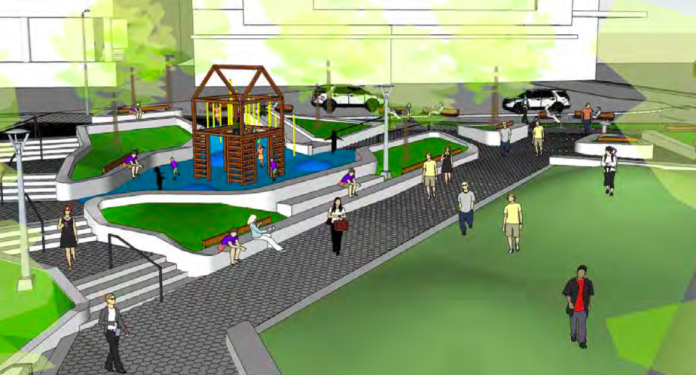
Alice Ball Park in Greenwood and the Urban Triangle Park in South Lake Union will bring new green space, pedestrian connections, and a dash of history to growing neighborhoods.
This spring one of Seattle’s newest parks is expected to be completed on the former site of a pub and mini-mart. Named after Alice Ball, a famous African American chemist who was born in Seattle in 1892 and developed the first successful treatment for leprosy, the park will offer important new green space for the growing Greenwood and Phinney neighborhoods. It will also offer a new raised pedestrian connection to the adjacent Greenwood Public Library.

Alice Ball Park is one of fourteen landbanked sites which were acquired by the City to provide additional access to open space in high urban density neighborhoods. Seattle Parks is using landbanking as a a strategy to increase open space. Seattle has a minimum citywide guideline of 3.33 acres per 1000 residents; the City also has a “desirable open space goal of 10 acres per 1000 residents.”
While the City has recognized the desirable goal is not attainable, it has continued to try to meet and exceed the current open space minimum, acknowledging that with current population growth “there is a continuing need for increasing capacity within our existing system.”
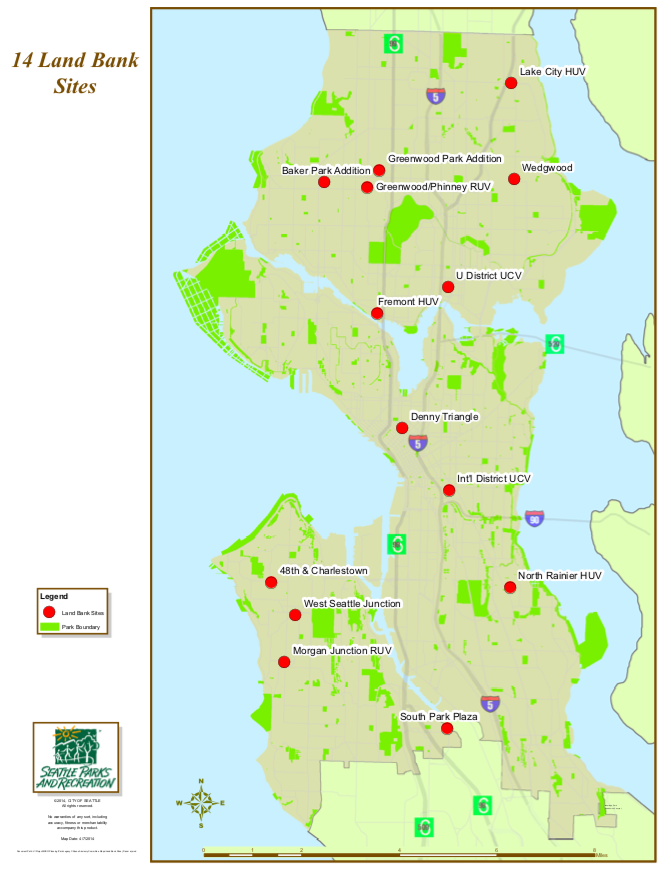
The Urban Triangle Park, built upon the former Enterprise Car Rental site, is projected to be completed in fall of 2019. In addition to contributing to additional open green space in the city, Alice Ball Park and the Urban Triangle Park have been designed to connect to neighboring sites, hopefully increasing pedestrian access and safety in two high traffic areas.
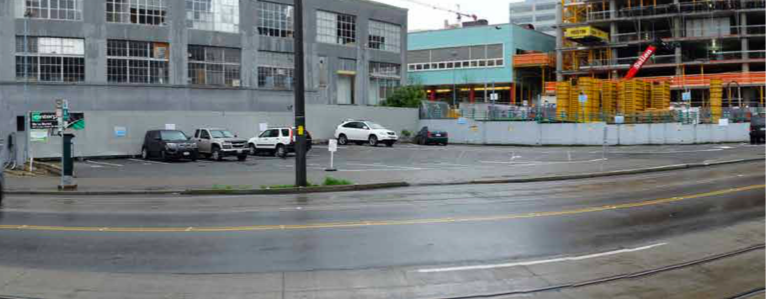
Alice Ball Park honors an important Seattle scientist
Located on Greenwood Avenue N between N 81st St and N 82nd St, Alice Ball Park falls within the Urban Village boundaries for the Greenwood/Phinney neighborhoods, just south of the designated town center at Greenwood Avenue N and N 85th St.
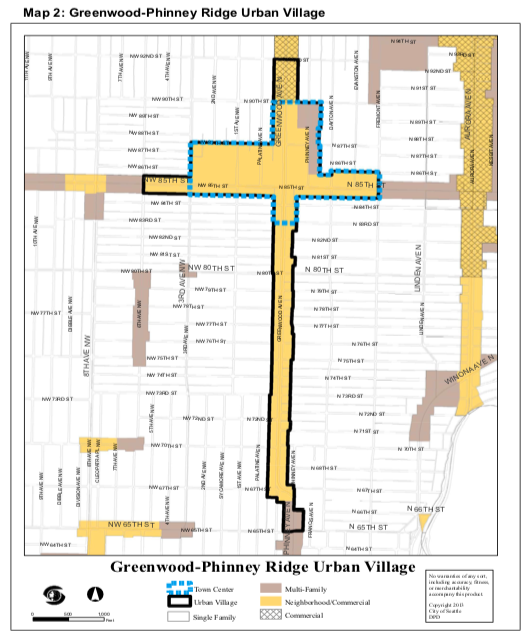
Although the Alice Ball Park is only approximately one mile northwest of Greenlake Park, busy Aurora Avenue corridor and topographical changes serve to separate the neighborhood from Greenlake. Alice Ball Park fills in a gap identified by the 2017 Gaps Analysis completed by Seattle Parks and Recreation.
The design of the Alice Ball Park is intended to facilitate community interaction and engagement with nature through designs elements including:
- Central open lawn
- Plaza
- Nature Discovery Trail
- Reading nook
- New trees and plantings.
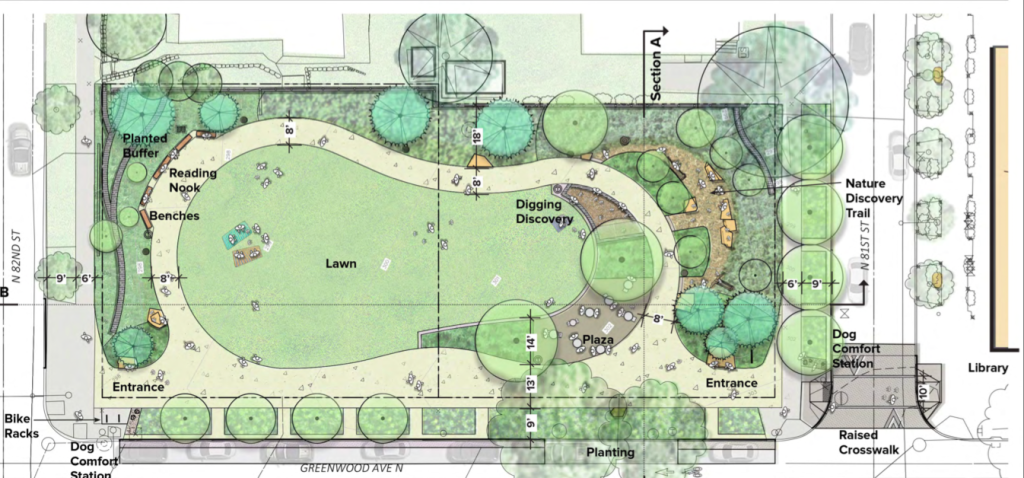
The site plan for the park was created about receiving input from the community during a series of public surveys and online meetings that took place during 2016-2017. The community also voted on a design for the raised pedestrian connection that will link the park with the adjacent library.
The winning design for the pedestrian connection is modeled after a plant and book pattern. It is intended to symbolically unite the two civic spaces.
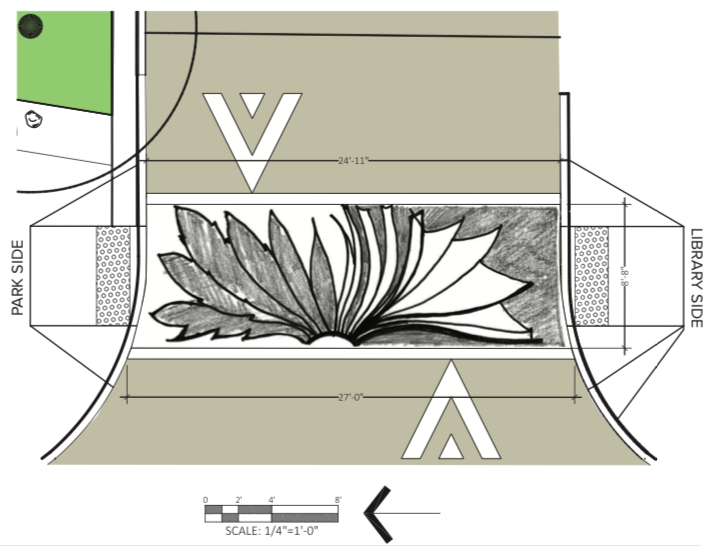
The intersection of the park with the library is also aptly symbolic of the life of Alice Ball. After earning multiple degrees from the University of Washington and University of Hawaii, Alice Ball made an important discovery. Oil from the chaulmoogra tree had been previously used as a moderately effective topic treatment for leprosy in traditional Chinese and Indian medicine. Using her knowledge of chemistry, Ball was able to develop an injectable treatment from chaulmoogra tree oil that was far more successful at alleviating leprosy’s symptoms. Known as the “Ball Method,” Ball’s discovery was used to treat thousands of patients for over thirty years until better understanding of leprosy’s causes led to the develop of more effective treatment methods.

graduate from the University of Hawaii with a master’s degree.
(Credit: University of Hawaii)
Tragically, Ball inhaled chlorine gas during a laboratory accident and died shortly afterward. She was only 24 years old.
The Urban Triangle Park makes a playful reference to the Denny Regrade
Situated at the cross section of Lenora Street and Westlake Avenue in the heart of the Denny Triangle Urban Center Village, The Urban Triangle Park will contribute an open lawn and play structure to an area of the city that has been criticized for its lack of amenities for families with children. Parents For a Better Downtown Seattle led the effort to bring local families together to participate in public outreach events held by the city and landscape architects.

Urban Triangle Park is located within the site of the famous Denny Regrade. Dubbed “mountain moving,” the Denny Regrade represented the city’s most audacious effort to reshape its terrain. 11,113,025 cubic yards of dirt were excavated to create the flat urban street grid of Belltown and South Lake Union. Many businesses and residences were also displaced during the process. The Seattle Public Library has a fascinating collection of photographs documenting the extensive regrades undertaken throughout Seattle during this era.

The design of the Urban Triangle Park is intended to pay homage to the neighborhood’s history.
We take this opportunity to represent and recall this historically significant and visually stunning period of Seattle’s development. As the Denny Triangle again finds itself within a period of unprecedented transformation and growth, we seek to offer a poetic gesture – a tribute to this incredible epoch in what seems like our distant past.
The Park can become a living room for gathering, relaxing, people watching, and playing as well as a venue for historical interpretation.
Seattle Parks and Recreation, Urban Triangle Park, Design Inspiration
While it might be a stretch to state the Regrade Playhouse design was inspired by the neighborhood’s past, the pedestrian connection that will be built in conjunction with park will do a lot to improve its future since a safe crossing across Westlake Avenue has been needed for a long time.


While Alice Ball Park and the Urban Triangle Park are constructed this year, Seattle Parks and Recreation is continuing to seek feedback on park ideas for other landbanked sites. Currently they are conducting outreach on a new park at 48th Ave SW and SW Charleston St in West Seattle. People can share their feedback online.
Natalie Bicknell Argerious (she/her) is a reporter and podcast host at The Urbanist. She previously served as managing editor. A passionate urban explorer since childhood, she loves learning how to make cities more inclusive, vibrant, and environmentally resilient. You can often find her wandering around Seattle's Central District and Capitol Hill with her dogs and cat. Email her at natalie [at] theurbanist [dot] org.

